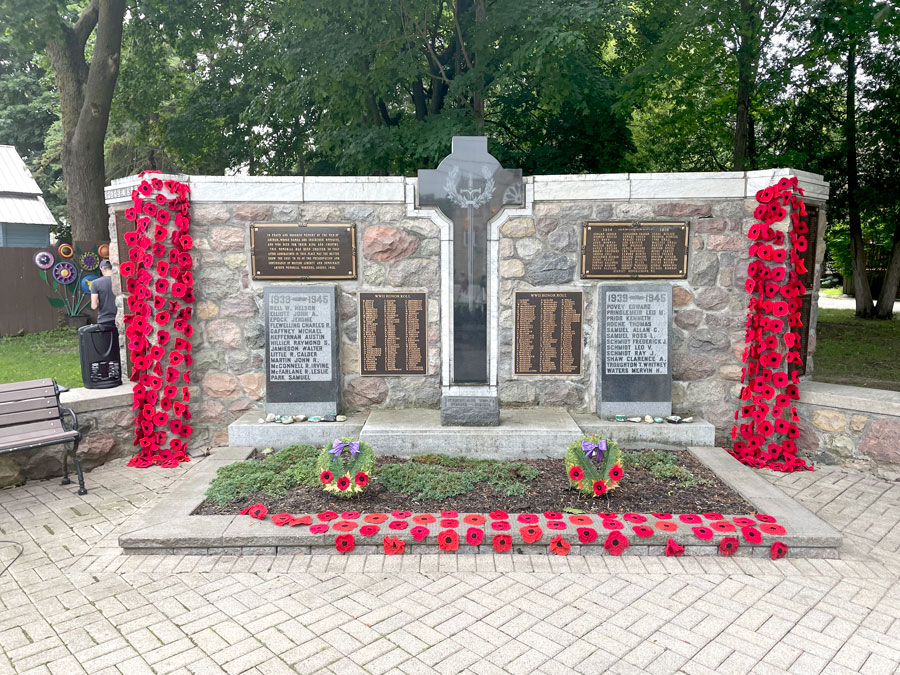ARTHUR – The Arthur cenotaph has stood at the corner of George and Frederick streets in Arthur since 1923, thanks to the hard work of a group of locals known as the Women Memorial Workers.
The group formed in 1919, after Arthur Enterprise News editor Rixon Rafter proposed the idea for a memorial to honour fallen soldiers.
According to Arthur and Area Historical Society officials, the Women Memorial Workers suggested the park at George Street and Frederick Street West “despite those who thought the former site of livery stables was inappropriate.”
The council of the day approved the location and purchased the land for $500.
Stones were collected from local farm fields to build the cenotaph, making it the first fieldstone cenotaph in Ontario, according to the historical society.
The architect was Arthur-raised Major J.M. Gibson, who commanded some local soldiers oversees, and the contractor was local stonemason Ed Doherty, officials state.
The cenotaph was unveiled by Women Memorial Workers president Mary Brocklebank and Margaret Chambers after a three hour ceremony on Aug. 6, 1923, according to an account by Robert Shipley and Derek Pullen posted on the Veteran Affairs Canada website.
Brocklebank and Chambers both lost their sons, Stanley Brocklebank and Robert Chambers, during the First World War.
In 2010, a plaque was installed in the walkway in front of the Cenotaph, recognizing the Women Memorial Workers’ contributions.
The plaque was funded by the Arthur and Area Historical Society and the Arthur Revitalization Committee.
According to the plaque, the Women Memorial Workers’ objective was to “honour those men from the area who had enlisted and especially those who had paid the supreme sacrifice.
“After 1923, the women continued their work landscaping the surrounding grounds and, in 1939, turned the park and Cenotaph monument over the village with a considerable financial contribution for upkeep,” the inscription on the stone states.




